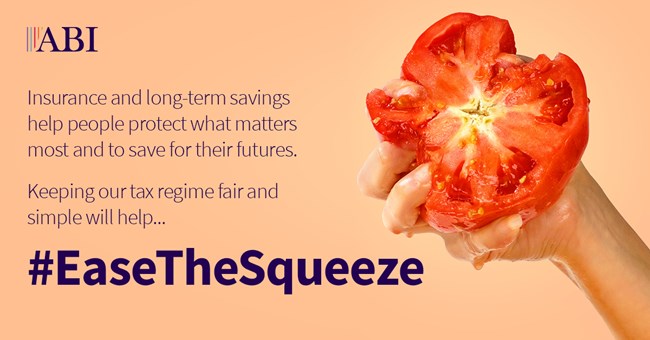 It is now time for Government to act in the Budget to help more people benefit fully from pensions tax relief, including those whose retirement savings have been hit hard by the pandemic.
It is now time for Government to act in the Budget to help more people benefit fully from pensions tax relief, including those whose retirement savings have been hit hard by the pandemic.
It is a year since the Government’s call for evidence on pensions tax relief administration closed. The call for evidence was an attempt at addressing the Net Pay anomaly and a Conservative Party manifesto commitment from 2019; we are still waiting for a response.
There are two types of employee pension scheme structures “Net Pay” or “Relief at Source” (RAS) that employers can choose. In RAS schemes, 20% pensions tax relief is automatically given to a saver, even when they are a non-income taxpayer, whereas in Net Pay schemes relief is given automatically based on a person’s marginal rate (which for non-income taxpayers is effectively 0%). Many employers opt for “net pay” due to the low administrative burden. While this scheme has other advantages, it does mean the employees who earn under the personal allowance effectively pay more for their pension than those on RAS. This is down to the mechanics of tax relief and the personal allowance.
Back in 2012, only 42% of private sector workers saved into a workplace pension, since the launch of Automatic Enrolment (AE), 86% now do[i]. But in pensions nothing stays the same for too long. When AE was introduced, the personal allowance for those under 65 was £7,475, shy of the £8,105 earnings threshold for AE. That meant that there were very few people opting into pension saving who were also non-income taxpayers. Today however, the personal allowance is £12,570, more than a quarter greater than the earnings threshold, and around 3m people who are not income taxpayers (at the point of saving) are contributing towards their pension.
The so-called Net Pay ‘anomaly’ which started off as a relatively minor quirk of the pensions tax system is now affecting around 1.5m lower earners, 75% of them women. The anomaly is withholding valuable pension contributions from savers for reasons beyond their control as it is normally up to the employer to choose which scheme to use.

When it was launched back in July 2020, the call for evidence was warmly met by the industry; it was a clear opportunity to progress the potential solutions proposed by HM Treasury and HMRC. The solution we argued for and continue to champion involves a small change to enable HMRC to use “net pay” data for end of year reconciliations which results in a tax refund being issued to those who paid more than those in a Relief at Source scheme. HMRC’s Real Time Information (RTI) system is the best way to identify savers and level the playing field with those in RAS schemes. Other approaches utilising the employer, payroll provider or pension scheme fall short on this vital point, offering only partial solutions or resulting in removing the saving incentive from low paid savers across the board.
As well as helping those on low incomes to save enough for retirement, the Government can stop penalising people who have had to dip into their pension savings to get by during the pandemic by scrapping the Money Purchase Annual Allowance (MPAA).
The MPAA was created following the introduction of the pension freedoms in 2015, and its purpose is to minimise the amount of tax relief savers can benefit from once they have accessed their pensions in certain ways. In 2017 the MPAA was then reduced from £10,000 down to £4,000, an amount that has not kept up with inflation in the past 4 years.
Even before the disruption to people’s livelihoods caused by Covid-19, this was having a biting impact. For example, for someone on earning the average salary for a 50-59* year old (£33,231) paying the minimum employer and employee contributions would only have to pay an extra £151 a month into their pension to exceed the MPAA. Paying anything from £152 or above would mean missing out on pensions tax relief.
During the past winter, employees aged 50 years and over were reporting working fewer hours than those under 50. The result for some has meant having to rely on their pension savings to get by. Having triggered the MPAA, it will now be much more difficult to build their pension pots back up again to pre-pandemic levels and beyond. It makes much more sense to remove this restriction, and replace with further saving recycling rules, which would address HM Treasury’s concerns.
Solving the net pay anomaly and getting rid of MPAA represents a small but very worthwhile addition to the total tax relief bill of £42bn and precisely helps the people the Government is trying to reach.
The 2021 Budget is the time for the Government to ease the squeeze on pension savings by allowing those on the lowest pay and those trying to rebuild their retirement savings after Covid-19 to benefit fully from pensions tax relief. These two changes not only improve the fairness of the system, but will strengthen millions of people’s prospects of having enough money in retirement.
#EaseTheSqueeze
[i] 2021 DWP: Workplace pension participation and savings trends of eligible employees: 2009 to 2020 https://www.gov.uk/government/statistics/workplace-pension-participation-and-savings-trends-2009-to-2020/workplace-pension-participation-and-savings-trends-of-eligible-employees-2009-to-2020
